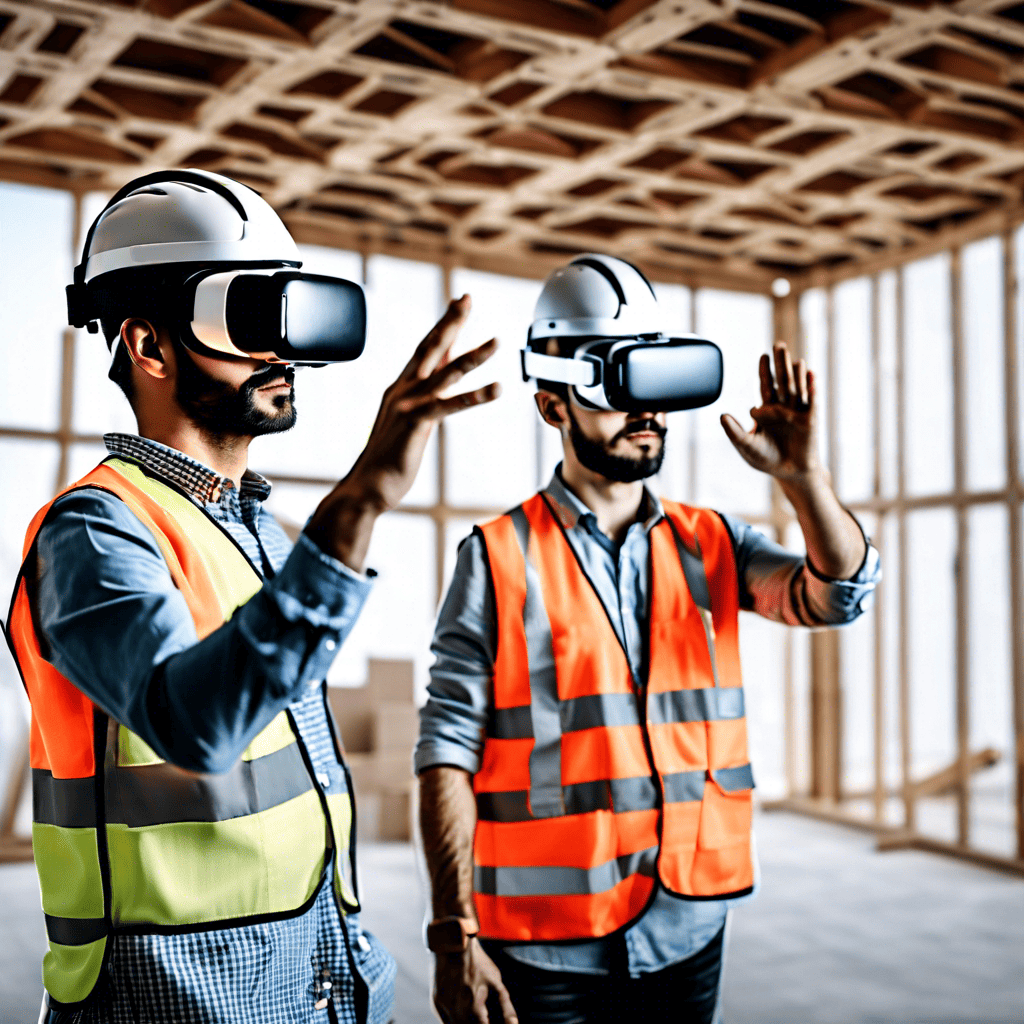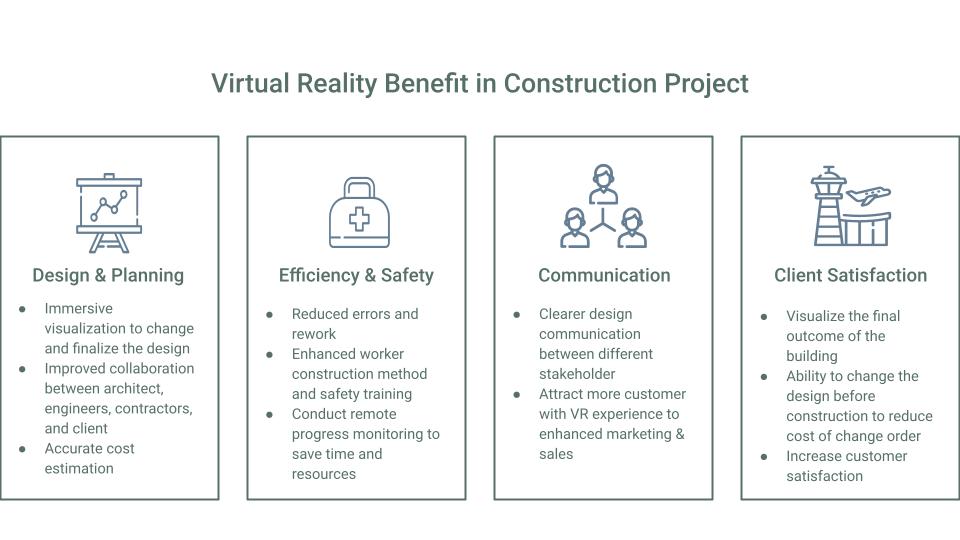Virtual Reality in Construction
What is Virtual Reality?
Virtual Reality (VR) in construction is a simulation of 3D environment with scenes and objects that is computer generated. The environment is appear to be real to make the user feel like they are immersed in their surroundings. The user can explore and interact with the environment by using a virtual reality headset, helmets, or google VR. In construction project, imagine putting on a pair of special goggles that transport you to any site project that you are working even before it is built. It’s like stepping into a 3D movie screen, where you can look around, move around, and even interact with the stuff inside with its immersive technology.
Example of Virtual Reality in Construction
The construction industry is one of the many sectors embracing the transformative power of virtual reality (VR). Here’s a captivating example of VR in construction project:
Imagine a towering skyscraper project. Before a single brick is laid, architects and engineers use a VR headset and step into a fully immersive replica of the future building. They can:
- Soar through the sky to visualize the building’s scale and relationship to its surroundings.
- Walk through every room and corridor, checking for potential flow issues or clashing elements.
- Interact with building components like doors, windows, and furniture, ensuring optimal placement and functionality.
- Identify potential safety hazards in advance, mitigating risks before construction begins.
By using VR technology, the stakeholder can have an immersive experience in their own project, leading to reduced error and reworks, enhance safety, and improve client satisfaction.
Here are some additional examples of VR in construction:
- VR-based training simulations can teach workers how to operate machinery, perform safety procedures, and handle emergencies.
- VR marketing tools can create immersive virtual tours of properties, allowing potential buyers to explore them in detail before scheduling a visit.
- VR for construction progress monitoring remotely, allowing stakeholders to stay informed without being physically present on site.
The possibilities are endless, and the construction industry is just beginning to tap into the power of VR. Some VR technology also use 3D point cloud data to visualize the current condition of the building/infrastructure.

Benefit of Construction Virtual Reality
From planning and design to training and marketing, VR’s potential to improve efficiency, safety, and client satisfaction is immense. As the technology continues to evolve, we can expect even more groundbreaking applications in the years to come.
Enhanced Design and Planning:
- Immersive visualization: Step into the finished building before a brick is laid. Experience scale, flow, and potential issues early on, leading to fewer costly rework during construction.
- Improved collaboration: Architects, engineers, contractors, and clients can all walk through the virtual model together, spotting clashes and ironing out kinks before ground is broken.
- Accurate cost estimation: Identify potential material needs and construction challenges in the VR mock-up, leading to more precise budget planning.
Boosted Efficiency and Safety:
- Reduced errors and rework: Catch design flaws and clashing elements in the virtual realm, saving time and money on expensive on-site fixes.
- Enhanced worker training: Immerse workers in VR simulations of construction tasks and safety procedures, improving skills and reducing on-site risks.
- Streamlined inspections: Conduct remote inspections of complex structures or hard-to-reach areas through VR, saving time and resources.
Improved Communication and Client Satisfaction:
- Clearer design communication: Clients can walk through their future space in VR, understanding the design intent and providing valuable feedback before construction begins.
- Enhanced marketing and sales: Immersive VR tours of properties can attract potential buyers and close deals faster.
- Increased stakeholder buy-in: Everyone involved in the project can visualize the final outcome, leading to better collaboration and decision-making.
In essence, VR acts as a powerful tool for construction, streamlining processes, saving costs, and boosting safety. It’s a game-changer in the industry, and its potential continues to grow with each innovative advancement.
